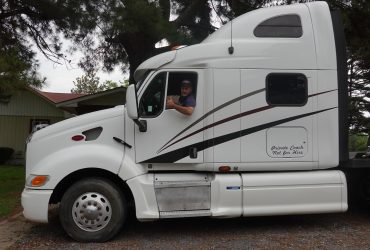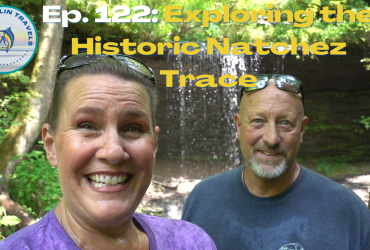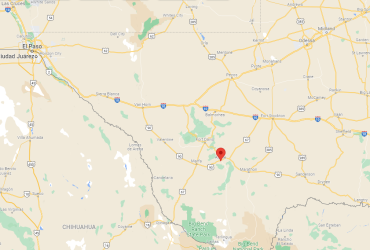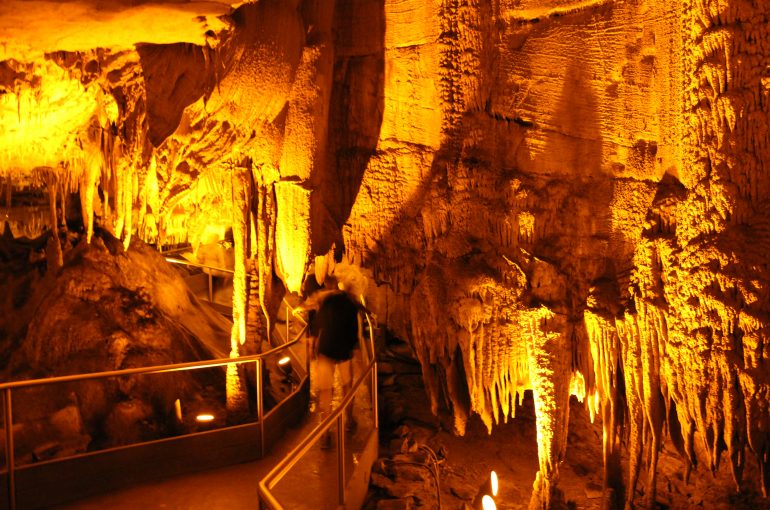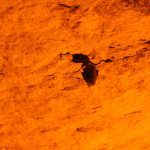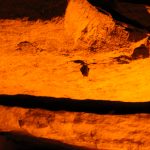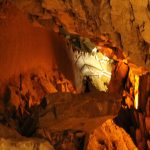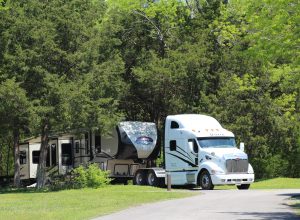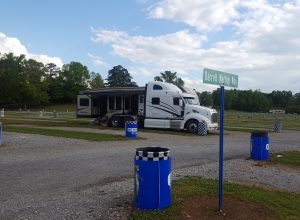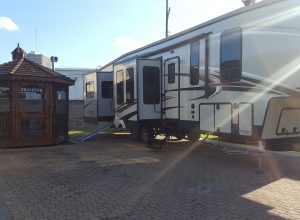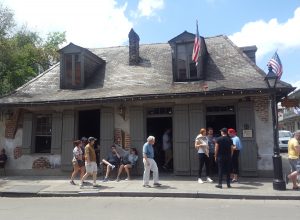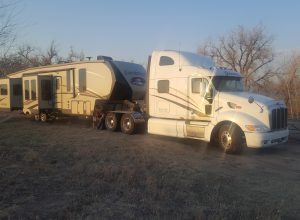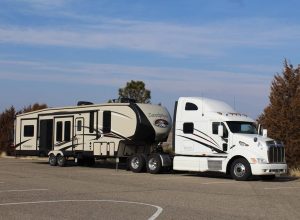When we left Nashville, we intended to drive straight through to Louisville, Kentucky. It was a fairly easy drive, and we hadn’t given much thought to doing any real sightseeing along the way. Then I watched an episode of The Motorhome Experiment on YouTube, and they had stopped and taken a tour of Mammoth Cave. The park is in Kentucky, about halfway between Nashville and Louisville, and was along our intended route. I watched the video again with Bubba when he got home from work that afternoon, and we decided to add Mammoth Cave to our list of destinations.
The world’s largest known cave system, more than 400 miles of underground caverns and passageways have been mapped out, and park officials believe there may be several hundred more miles that have yet to be explored. In all, the park encompasses 80 square miles. One of the early guides, Stephen Bishop, was a young slave who led guests into the cave’s depths using oil lamps to light the way. He died in 1857 and is buried near the cave entrance.
Established as a national park on July 1, 1941, the many guided tours into Mammoth Cave cover only about 10 total miles of the cave’s underground trail system. There is something for nearly everyone, from basic cave gazing to full-blown spleunking for those who are braver (ahem…crazier) than us.
We chose the Domes and Dripstones tour, which lasts about 2.5 hours and spans three-quarters of a mile underground. It encompasses the biggest variety of cave formations, at least from what we could see. It required a good deal of stair climbing, and the guides strongly recommended against the tour for those who are claustrophobic. It probably isn’t suitable for anyone with bad knees, either.
The initial descent into the cave is 280 steps, which took us roughly 300 feet underground. Areas of the cave are wet and can be slippery, and there were areas where we had to either duck or scoot sideways to traverse narrow passages or low ceilings. These areas were fairly brief, and quickly opened back up into wider, more comfortable areas. Neither of us personally felt claustrophobic on this tour, although someone else might have a different opinion. Flash photography isn’t allowed inside the caves, so it was pretty tough to get decent photos.
We were lucky enough to see one little bat during our tour. Apparently they make themselves pretty scarce to tourists. These cave bats have been confirmed to have white nose disease, so all guests have to walk through a disinfecting mat at the end of the tour to kill any fungal particles picked up on the shoes.
Despite the outside temperature, the interior of the cave remains consistently around 54 degrees. All of the walking and stair climbing kept us plenty warm during our tour. The entire route is lighted in such a way as to highlight the many interesting cave formations without being obnoxious. At one point in the tour, the guide briefly turned off all the lights so everyone could experience just how dark the cave can be. I swear, I couldn’t have seen my own hand if I poked myself in the eye!
The tour finally passes through the Frozen Niagara dripstones at its conclusion. Appropriately named, these formations really do look like a waterfall frozen in time.
Overall, it was a great experience – really fun and interesting. We’re glad we made it a stopover on our way north!

